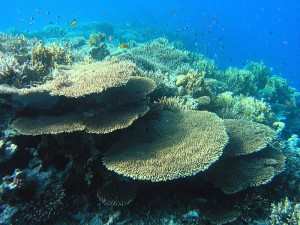THURSDAY, 30 SEPTEMBER 2010
Despite over a century of intensive research, a solid theoretical model of species diversity has always eluded science. Differences in the morphology, physiology and behaviour of individuals of different species, individuals of the same species, or even the same individual in different environments, creates a very high degree of complexity in ecological communities. Consequently, most current theories of biodiversity are based on only a single mechanism, or contain such unrealistic assumptions as to render them ineffectual for guiding conservationists.In his PhD thesis, Omri Allouche [1] of Hebrew University has developed a new theory of species diversity. The fundamental properties of species (such as rates of birth, death, and migration) as well as those of the environment (including resource availability, habitat loss, and frequency of disturbances) are mathematically modelled in order to predict the number of different species that can be supported in different scenarios. Crucially, Allouche's theory takes into account interdependency of these properties as they evolve in time, and contains fewer simplifications. This has resulted in predictions that match empirical studies better than those of other existing theories.
The model has been used to make predictions that have already been supported by observation in the field, many of which are counter-intuitive. For example, the theory predicts that improving habitat quality by resource enrichment can actually reduce biodiversity.
The generality and flexibility of this model makes it a valuable tool for conservation managers and policy makers. Allouche believes his work can help to improve nature reserve design, effectively identify and protect endangered species, and hence aid the biodiversity conservation effort.
Written by Katy Wei

